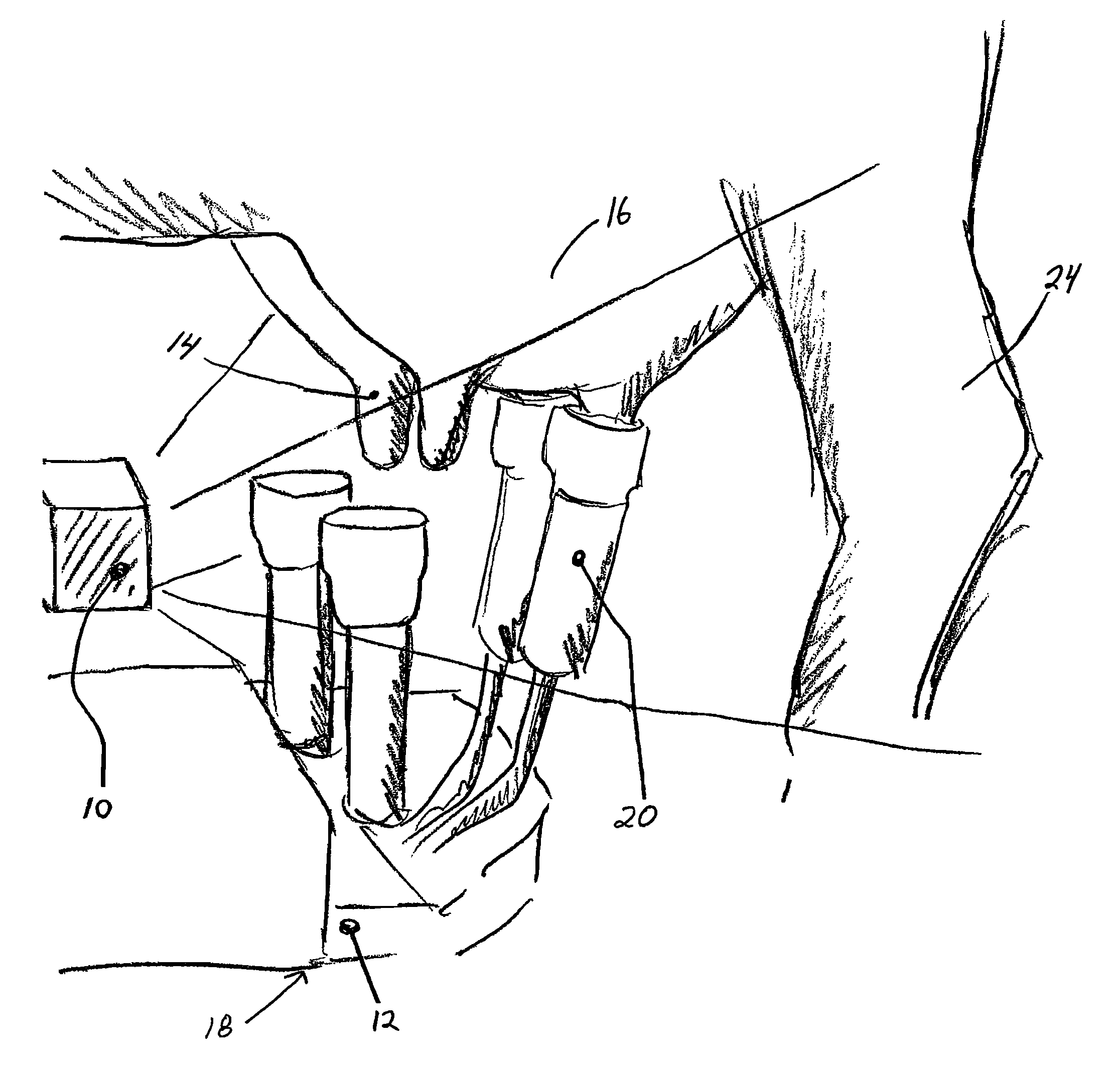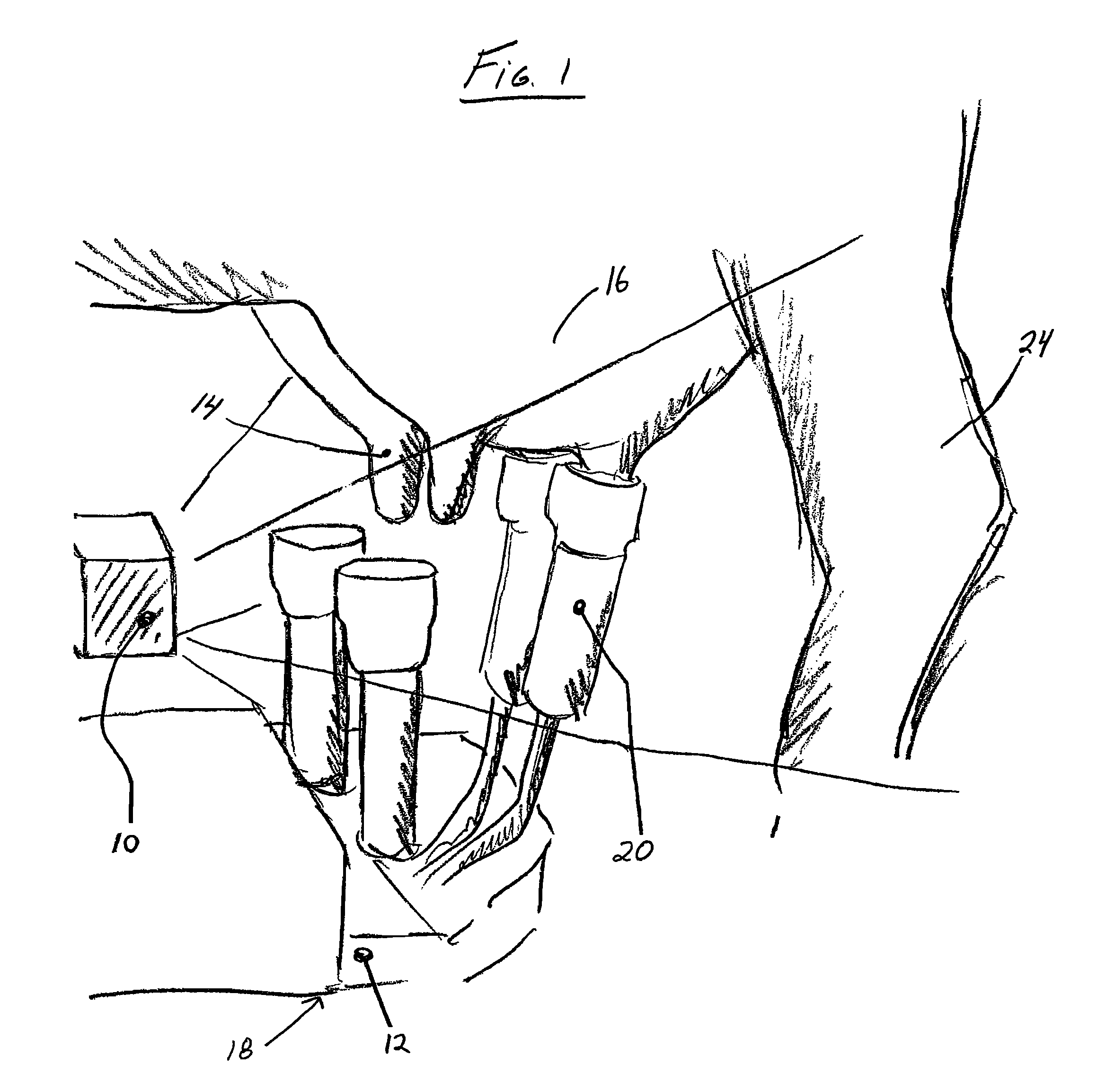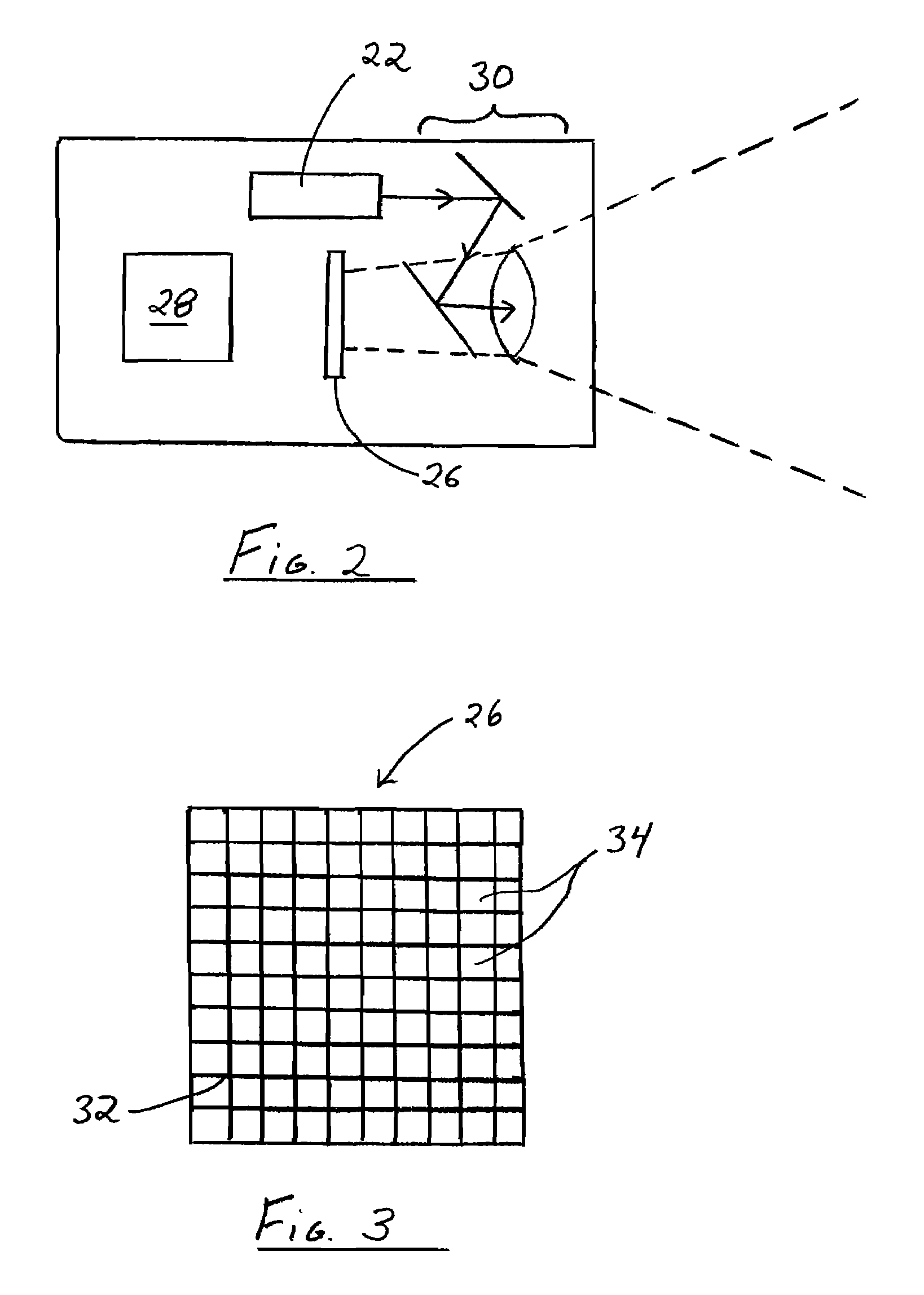Time of flight teat location system
a technology of time flight and teat, which is applied in the field of automatic detection of the location of animal teats, can solve the problems of significant problems, affecting the quality of images obtained, and affecting the quality of images,
- Summary
- Abstract
- Description
- Claims
- Application Information
AI Technical Summary
Benefits of technology
Problems solved by technology
Method used
Image
Examples
Embodiment Construction
[0023]FIG. 1 illustrates the preferred embodiment of the invention. A sensor housing 10 is mounted on robot arm 12 for sensing the location and attitude of teats 14 on an udder 16. The output of the sensor is used to control the application of the automated milking apparatus 18 that includes milking cups 20 that are also mounted on robot arm 12. The milking apparatus is adapted to receive instructions characterizing the location of the teats, to move the robot arm to such location so as to engage the milking cups onto the teats.
[0024]Sensor housing 10 includes a modulated light source 22 for radiating throughout the field of view that encompasses the udder 16, the teats 14 and the hind legs 24 of the animal. Referring to FIG. 2, sensor housing 10 includes a camera 26, control, image capture and readout electronics 28 and suitable optics 30.
[0025]As illustrated schematically in FIG. 3, camera 26 consists of a two-dimensional array 32 of pixels 34, each of which can report time of fli...
PUM
 Login to View More
Login to View More Abstract
Description
Claims
Application Information
 Login to View More
Login to View More - R&D
- Intellectual Property
- Life Sciences
- Materials
- Tech Scout
- Unparalleled Data Quality
- Higher Quality Content
- 60% Fewer Hallucinations
Browse by: Latest US Patents, China's latest patents, Technical Efficacy Thesaurus, Application Domain, Technology Topic, Popular Technical Reports.
© 2025 PatSnap. All rights reserved.Legal|Privacy policy|Modern Slavery Act Transparency Statement|Sitemap|About US| Contact US: help@patsnap.com



